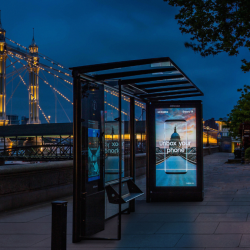The media industry is at a crossroads. The challenge of delivering effective, responsible advertising gets trickier each year, spurred by regulatory shifts, changes in consumer expectations, and an increasingly fragmented industry. Media agencies and brands need to work together to prioritise safety in their advertising, making sure ads land in responsible and relevant places.
At the same time, media agencies are under pressure to deliver campaigns that drive results and deliver strategies with a high return on investment. Failing to ensure their campaigns sit alongside content that is safe and suitable can damage trust, harm reputations, and alienate audiences, which is why it’s so important for media agencies to get it right.
Why media agencies need to focus on a non-negotiable approach to brand safety
Media agencies face a complex and challenging remit when planning campaigns; with the need to balance creativity, effectiveness, and increasingly, brand safety. At its core, brand safety refers to ensuring ads don’t appear alongside harmful or inappropriate content that could erode consumer loyalty and damage a brand’s reputation. The fallout of being ‘seen in the wrong place’ is a risk no business can afford in today’s hyper-connected world. This topic is evergreen, but recent events have brought it into sharper focus. For example, the issue of childhood obesity, a long-standing public health concern, has become increasingly tied to advertising regulations. The UK government, which declared childhood obesity ‘one of the biggest health challenges this country faces‘ in 2019, has now passed a law banning paid-for ads for ‘less healthy’ HFSS (high fat, salt, or sugar) products online, effective 1 October 2025. This underscores the critical responsibility media agencies and advertisers bear in protecting young audiences.
Moreover, the global elections of 2024 reignited fears around misinformation, causing agencies to become wary of executing campaigns associated with divisive or unsafe content.
For media agencies, this climate has increased the pressure to deliver responsible advertising and reach audiences safely, legally and effectively. Not only must they guide brands through these challenges, but they must also ensure their own media-buying practices are reflective of their commitment to protecting audiences and preserving trust. Contextual targeting and upskilling teams to utilise AI and machine learning tools provides a proactive method for agencies to execute this.
Context is king
In the post-cookie era, it’s become more difficult for agencies to ensure ads appear in suitable and relevant environments. With reliance on third-party data diminishing, more effective, privacy compliant strategies are needed. For media agencies, contextual targeting is an opportunity to deliver campaigns that are not only safe but also effective in delivering ROI and helping their clients stand out in a highly competitive marketplace.
By aligning ads with the content people are consuming — whether that’s a YouTube video about healthcare policy or an Instagram post about climate change — advertisers can ensure that their message is relevant to the viewer’s current interests, and achieve better ROI while maintaining a commitment to suitability. By using AI-driven technology and human expertise, we analyse content, viewer behaviour, and sentiment to ensure ads are placed in relevant, brand-safe environments.
Agencies can lean into tools such as these to enable precise contextual targeting and guarantee that every impression counts.
Inclusion and exclusion
Historically, media agencies have relied heavily on block lists as a simple approach to avoiding controversial or unsafe content when planning campaigns. This method however inadvertently risks stifling important conversations, blocking or ignoring huge groups of people, and ultimately limits reach — with a negative impact on campaign ROI. If media agencies instead focus on inclusion lists, agencies will be able to offer more reach and consumers will be exposed to more creative and diverse content as more creators will receive the advertising they need to fund future content.
The reverse of this is ‘de-platforming’ creators, by not providing them with the ad revenue they need. Or better yet, provide options to use both methods to ensure ultimate campaign optimisation.
Media agencies have an opportunity to guide brands in understanding how to balance exclusion and inclusion strategies, to ensure campaigns remain both effective and inclusive.
Comprehensive inclusion lists, however, identify and prioritise trust and relevant content, making them the smarter alternative. In an industry where one misstep can harm a brand, agencies need to focus on precision in excluding harmful content — whether it involves violence, drugs, adult material, or unsuitable themes — beyond basic industry standards. This level of granularity ensures a brand can be protected from reputational risk without over-censoring.
Key takeaways
By prioritising contextual targeting and curated inclusion lists of trusted channels, media agencies and brands can achieve a balanced approach that safeguards reputation and delivers on performance, offering a reliable alternative to broad programmatic strategies. performance, keeping reputation intact while delivering performance where it counts.
Featured image: Ilse Orsel / Unsplash


































